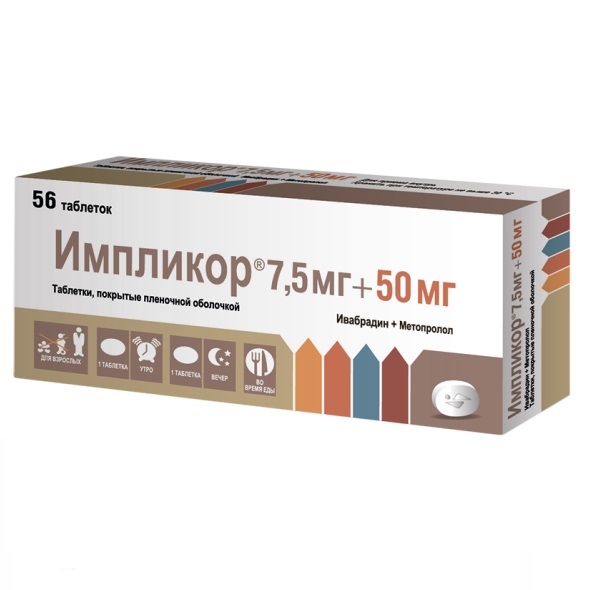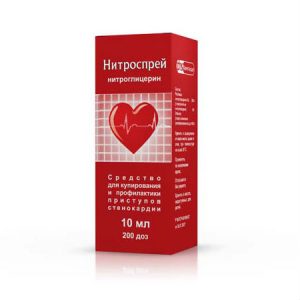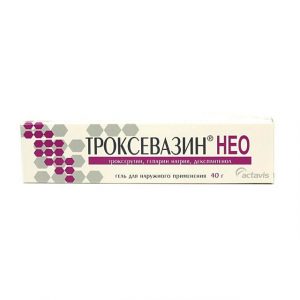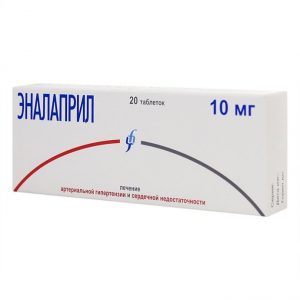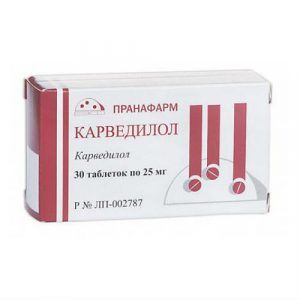Description
Pharmacological action of
Mechanism of action of
Ivabradine
Ivabradine is a cardiac rhythm inhibitor whose mechanism of action is the selective and specific inhibition of If channels of the sinus node that control spontaneous diastolic depolarization in the sinus node and regulate heart rate. Ivabradine has a selective effect on the sinus node, without affecting the timing of the impulses along the atrial, atrioventricular and intraventricular pathways, as well as the contractility of the myocardium and repolarization of the ventricles. Ivabradine can also interact with Ih retinal channels, similar to If channels of the heart. They participate in the occurrence of a temporary change in the system of visual perception due to a change in the reaction of the retina to bright light stimuli. Under provoking circumstances (for example, a rapid change in brightness in the visual field), partial inhibition of Ih channels by ivabradine causes a phenomenon of light perception (phosphene). Phosphenes are characterized by a transient increase in brightness in a limited area of ² ¹ ² ¹the visual field.
metoprolol
metoprolol is a cardioselective blocker, blocking 1-adrenergic receptors (located mainly in the heart) in doses much lower than the doses required to block 2-adrenergic receptors (localized mainly in peripheral vessels and bronchi). Metoprolol does not have membrane stabilizing and internal sympathomimetic activity (ICA).
Pharmacodynamic properties of
ivabradine
The main pharmacological feature of ivabradine is the ability of a dose-dependent reduction in heart rate. The analysis of the dependence of the decrease in heart rate on the dose of the drug was carried out with a gradual increase in the dose of ivabradine to 20 mg 2 times / day and revealed a tendency to achieve a plateau effect, which reduces the risk of severe bradycardia (heart rate less than 40 beats / min) (see section Side effects )
When prescribing the drug in recommended doses, the decrease in heart rate is approximately 10 beats / min at rest and during physical exertion. As a result, the work of the heart decreases and the need for myocardium in oxygen decreases.
Ivabradine does not affect intracardiac conduction, myocardial contractility (does not have a negative inotropic effect) and the process of ventricular repolarization. In clinical electrophysiological studies, ivabradine had no effect on the timing of the pulses along the atrioventricular or intraventricular pathways, as well as on the adjusted QT intervals.
In patients with left ventricular dysfunction (left ventricular ejection fraction (LVEF) 30-45%) it was shown that ivabradine did not affect LVEF.
Metoprolol
Metoprolol reduces or blocks the action of catecholamines on the heart, which leads to a decrease in heart rate, myocardial contractility and cardiac output. It has an antihypertensive effect both in a standing position and lying down, and also prevents the rise of blood pressure during exercise.
Clinical efficacy and safety
Ivabradine
The antianginal and anti-ischemic efficacy of ivabradine was studied in 5 studies (three of which were compared with placebo and one at a time compared with atenolol and amlodipine) in patients with stable chronic angina pectoris.
It was found that ivabradine at a dose of 5 mg 2 times / day improved the performance of exercise samples after 3-4 weeks of therapy. Efficacy has been confirmed for a dose of 7.5 mg 2 times / day. In particular, an additional effect with increasing doses from 5 to 7.5 mg 2 times / day was established in a comparative study with atenolol. The exercise time increased by about 1 minute after 1 month of using ivabradine at a dose of 5 mg 2 times / day, while after an additional 3-month course of taking ivabradine at a dose of 7.5 mg 2 times / day, a further increase of this indicator by 25 seconds was noted . The antianginal and anti-ischemic activity of ivabradine was also confirmed for patients aged 65 years and older. The effectiveness of ivabradine when used in doses of 5 mg and 7.5 mg 2 times / day was observed in relation to all indicators of exercise tests (total duration of physical activity, time to the onset of a limiting angina attack, time to the onset of an angina attack and time to development of a ST segment depression by 1 mm ), and was also accompanied by a decrease in the incidence of angina attacks by about 70%. The use of ivabradine 2 times / day provided constant therapeutic efficacy for 24 hours.
Administration of ivabradine in patients taking atenolol at a dose of 50 mg 1 time / day showed additional efficacy in relation to all indicators of stress tests at the decline in its pharmacological activity (12 hours after ingestion).
Ivabradine on the decline in pharmacological activity (12 hours after ingestion) did not have an additional effect when added to amlodipine at a dose of 10 mg / day, while at the maximum activity of ivabradine (3-4 hours after ingestion) its additional effectiveness has been proven.
Ivabradine on the decline in pharmacological activity (12 hours after ingestion) during the 6-week treatment showed a statistically significant additional effectiveness in achieving a response to treatment (defined as reducing angina attacks to at least 3 per week and / or increasing the time to the development of ST segment depression by 1 mm for at least 60 seconds during a stress test on a treadmill) when added to amlodipine at a dose of 5 mg 1 time / day or to nifedipine at a dose of 30 mg 1 time / day. There was no improvement in the effectiveness indicators of ivabradine, assessed by reaching the secondary endpoints when performing stress tests, on the decline in therapeutic activity, at the same time, efficiency was shown at the maximum activity (3-4 hours after ingestion of ivabradine).
In studies of the clinical efficacy of the drug, the effects of ivabradine were fully preserved throughout the 3- and 4-month treatment periods. During treatment, there were no signs of tolerance (decreased effectiveness), and after discontinuation of treatment, withdrawal symptoms were not observed. The antianginal and anti-ischemic effects of ivabradine were associated with a dose-dependent decrease in heart rate, as well as a significant decrease in the work product (heart rate ² systolic blood pressure), both at rest and during physical exertion. The effect on blood pressure and OPSS was insignificant and clinically insignificant.
Sustained heart rate reduction has been observed in patients taking ivabradine for at least 1 year. No effect on carbohydrate metabolism and lipid profile was observed.
In patients with diabetes mellitus, the efficacy and safety of ivabradine were similar to those in the general patient population.
In a study in patients with coronary heart disease without clinical manifestations of heart failure (LVEF more than 40%) with maintenance therapy, ivabradine therapy at doses higher than recommended (initial dose 7.5 mg 2 times / day (5 mg 2 times / day in patients over the age of 75 years), which was then titrated to 10 mg 2 times / day), did not significantly affect the primary combined endpoint (death due to a cardiovascular cause or the development of non-fatal myocardial infarction). The incidence of bradycardia in the group of patients receiving ivabradine was 17.9%, in the placebo group – 2.1%. 71% of patients during the study took verapamil, Diltiazem or potent inhibitors of the CYP3A4 isoenzyme.
In patients with angina pectoris of class II or higher according to the classification of the Canadian Society of Cardiology, a small statistically significant increase in the number of cases of the primary combined endpoint was observed with ivabradine, which was not observed in the subgroup of all patients with angina pectoris (class I and above). In this study, a higher dose was used compared to the approved dose, which nevertheless does not explain the results.
In a study involving patients with stable angina pectoris and left ventricular dysfunction (LVEF less than 40%), 86.9% of whom received beta-blockers, there were no differences between the groups of patients taking ivabradine with standard therapy and placebo, the total frequency of deaths from cardiovascular diseases, hospitalization for acute myocardial infarction, hospitalization for the occurrence of new cases of heart failure or increased symptoms of chronic heart failure (CHF). In patients with symptomatic angina pectoris, there were no significant differences in the incidence of death due to a cardiovascular cause or hospitalization due to the development of non-fatal myocardial infarction or heart failure (incidence rate – 12.0% in the ivabradine group and 15.5% in the placebo group, respectively).
Metoprolol
In patients with coronary artery disease, metoprolol reduces the frequency and severity of ischemic episodes and increases exercise tolerance. Indicated beneficial effects of metoprolol, possibly due to a decrease in myocardial oxygen demand as a result of a decrease in heart rate and myocardial contractility.
Use in children and adolescents
The use of the drug Implicor ® in children and adolescents under the age of 18 is not well understood (see Pharmacokinetics section).
Pharmacokinetics
The rate and extent of absorption of ivabradine and metoprolol when taken orally as part of the drug Implicor ® do not significantly differ from the corresponding values ² ¹ ² ¹of speed and degree of absorption in cases where both drugs are used separately.
Ivabradine
Under physiological conditions, ivabradine is rapidly released from the tablet and readily soluble in water (solubility greater than 10 mg / ml). Ivabradine is an S-enantiomer with no bioconversion according to in vivo studies. The main active metabolite of the drug is the N-desmethylated derivative of ivabradine.
Absorption and bioavailability
After oral administration, ivabradine is rapidly and almost completely absorbed from the gastrointestinal tract. Cmax in blood plasma is reached approximately 1 hour after ingestion on an empty stomach. The absolute bioavailability of film-coated tablets is approximately 40%, due to the effect of the first passage through the intestines and liver.
Eating increases the absorption time by approximately 1 hour and increases exposure from 20% to 30%. To reduce exposure variability, the drug is recommended to be taken simultaneously with food intake (see section Dosing regimen).
Distribution of
Plasma protein binding is approximately 70%. Vd in equilibrium in patients is about 100 liters. Cmax with prolonged use at a dose of 5 mg 2 times / day is 22 ng / ml (coefficient of variation, CV = 29%). The average equilibrium plasma concentration is 10 ng / ml (CV = 38%).
Metabolism
Ivabradine is significantly metabolized in the liver and intestines by oxidation involving only the cytochrome P450 3A4 isoenzyme (CYP3A4). The main active metabolite is the N-desmethylated derivative of ivabradine (S18982), which accounts for 40% of the administered dose of ivabradine. The metabolism of this active metabolite of ivabradine also occurs with the participation of the CYP3A4 isoenzyme. Ivabradine has a slight affinity for the CYP3A4 isoenzyme, does not induce or inhibit it, and, therefore, does not affect the metabolism or concentration of substrates of the isoenzyme CYP3A4 in blood plasma. On the contrary, the use of powerful inhibitors or inducers of the CYP3A4 isoenzyme may be accompanied by a significant change in the concentration of ivabradine in the blood plasma (see the Drug Interaction section).
Elimination of
T1 / 2 of ivabradine from blood plasma averages 2 hours (70-75% AUC), and effective T1 / 2 – 11 hours. Total clearance is approximately 400 ml / min, renal clearance – 70 ml / min. Excretion of metabolites occurs at the same rate by the kidneys and through the intestines. About 4% of the dose taken is excreted by the kidneys unchanged.
Linearity / Nonlinearity of Pharmacokinetics
The pharmacokinetics of ivabradine is linear in the dose range of 0.5 to 24 mg.
Special patient groups
Elderly patients. Pharmacokinetic parameters (AUC and Cmax) do not significantly differ in groups of patients 65 years and older, 75 years and older, and in the general patient population (see section Dosage regimen).
Impaired renal function. The effect of decreased renal function (CC from 15 to 60 ml / min) on the kinetics of ivabradine is minimal, because only about 20% of ivabradine and its active metabolite S18982 are excreted by the kidneys (see section Dosage regimen).
Impaired liver function. In patients with mild hepatic insufficiency (up to 7 points on the Child-Pugh scale), the AUC of free ivabradine and its active metabolite is 20% higher than in patients with normal liver function. Data on the use of ivabradine in patients with moderate (7-9 points on the Child-Pugh scale) liver failure are limited and do not allow to draw a conclusion about the pharmacokinetics of the drug in this group of patients. Data on the use of ivabradine in patients with severe liver failure (10 points or more on the Child Pugh scale) are currently not available (see the Contraindications and Dosage Regimen sections).
Relationship between pharmacokinetic and pharmacodynamic properties
Analysis of the relationship between pharmacokinetic and pharmacodynamic properties found that a decrease in heart rate is directly proportional to an increase in the concentration of ivabradine and its active metabolite S18982 in plasma when taken in doses up to 15-20 mg 2 times day. At higher doses, the slowdown in heart rate is not proportional to the concentration of ivabradine in the blood plasma and is characterized by a tendency to reach a plateau. High concentrations of ivabradine, which can be achieved with a combination of the drug with potent inhibitors of the isoenzyme CYP3A4, can lead to a pronounced decrease in heart rate. When combined with moderate inhibitors of the CYP3A4 isoenzyme, this risk is lower (see the Contraindications, Drug Interactions and Special Instructions sections).
Metoprolol
Absorption and distribution of
After oral administration, metoprolol is completely absorbed from the digestive tract. Cmax in blood plasma is reached after 1.5-2 hours after administration. Due to the effect of the first passage through the liver, bioavailability is approximately 50% with a single oral administration. Simultaneous food intake increases bioavailability by approximately 30-40%. Communication with plasma proteins is negligible (5-10%).
Metabolism
Metoprolol is metabolized in the liver by oxidation. The three known major metabolites of metoprolol do not have significant beta-blocking activity.
In the metabolism of the drug, the main, but not the only part is the CYP2D6 isoenzyme. Due to the polymorphism of the CYP2D6 isoenzyme gene, the metabolic rate of metoprolol in patients exhibits interindividual variability. Patients with a low metabolic rate (7-8%) show a higher concentration of metoprolol in blood plasma and its slower excretion compared to patients with a high metabolic rate.
Excretion
The concentration after oral administration in blood plasma is constant and reproducible individually in patients, however, more than 95% of metoprolol and its metabolites are excreted through the kidneys, unchanged – about 5%, in some cases – up to 30%. T1 / 2 is about 3.5 hours (1 to 9 hours). Plasma clearance is approximately 1 l / min.
Special patient groups
Pharmacokinetic parameters (AUC and Cmax) do not differ significantly in elderly patients (65 years and older) and younger.
Impaired liver function. The bioavailability of metoprolol increases and the rate of its excretion decreases.
Use during pregnancy and during breastfeeding. Metoprolol crosses the placental barrier. The average ratio of the concentration of metoprolol in the umbilical cord and maternal blood is 1. Metoprolol passes into breast milk. The concentration of metoprolol in breast milk may be 3.7 times higher than its concentration in the mother’s blood.
Indications
Symptomatic treatment of stable angina pectoris in adult patients with normal sinus rhythm, whose condition was adequately controlled using a combination of ivabradine and metoprolol monopreparations in the same doses.
Contraindications
hypersensitivity to ivabradine, metoprolol (and other drugs of the beta-blockers group due to possible cross-sensitivity), as well as to excipients that are part of the drug
severe or symptomatic bradycardia (see dosing regimen)
cardiogenic shock
acute myocardial infarction or suspected acute myocardial infarction complicated by severe bradycardia, degree I AV block, arterial hypotension (systolic blood pressure less than 100 mmHg) and / or severe heart failure
CCC sinoatrial blockade)
AV block II and III degree
severe arterial hypotension (blood pressure less than 90/50 mm Hg) or symptomatic arterial hypotension
unstable or acute heart failure
in patients, periodically uchayuschih short-term treatment of beta-agonists
patients dependent on a pacemaker (in which the heart rhythm is provided only by constant pacemaking)
unstable angina pectoris
severe untreated peripheral vascular disease
severe hepatic insufficiency
metabolic acidosis, both are ), macrolide antibiotics (clarithromycin, erythromycin for oral administration, josamycin, telithromycin), and gibitorami HIV protease (nelfinavir, ritonavir), and nefazodone (see. partitions Pharmacokinetics and Drug Interactions)
simultaneous application of verapamil or diltiazem, since they are moderate inhibitors of the CYP3A4 isoenzyme and have the ability to reduce heart rate (see the Drug Interaction section)
pregnancy (see Pregnancy and lactation)
breastfeeding (see Pregnancy and lactation)
use by women with preserved reproductive potential, not using reliable methods of contraception (see section Pregnancy and lactation)
age up to 18 years (efficacy and safety of use in this age group have not been studied).
Caution
In patients with: moderate hepatic insufficiency (less than 9 Child-Pugh score) mild and moderate arterial hypotension by congenital lengthening of the QT interval or while taking medications, prolonging the QT interval by Prinzmetal’s angina pectoris with asthma or COPD AV blockade of 1 degree with heart rhythm disturbances with a stroke, severe renal impairment (CC less than 15 ml / min), arterial hypertension, chronic heart failure, obstructive pulmonary disease, diabetes mellitus, especially with the simultaneous use of insulin or oral sugars drugs with psoriasis thyrotoxicosis pigment retinal degeneration with severe history of hypersensitivity and receiving desensitizing general therapy, elderly (over 65 years old) (see. Special Instructions).
When: CHF and intraventricular conduction disturbances (left or right bundle branch block) and ventricular dyssynchrony of CHF IV functional class according to NYHA classification with the simultaneous use of amiodarone or powerful antiarrhythmic drugs of class I general anesthesia (see Special instructions).
Cautions regarding concomitant use with other drugs are indicated in the Drug Interactions section.
Composition
Tablets, coated with a white film coating, oblong, biconvex, with engravings on one side -, on the other – number 4.
1 tab.
ivabradine hydrochloride 8.085 mg,
which corresponds to the content of ivabradine 7.5 mg
metoprolol tartrate 50 mg
Excipients: microcrystalline cellulose – 94.555 mg, pregelatinized starch (corn) – 72 mg, 12 mg maltodextin, maltodextin colloidal anhydrous – 0.96 mg.
Shell composition: glycerol – 0. 36288 mg, hypromellose – 6.031872 mg, macrogol 6000 – 0.385152 mg, magnesium stearate – 0.36288 mg, titanium dioxide – 1.161216 mg.
Dosage and administration of
Implicor ® should be taken orally 1 tablet 2 times / day, morning and evening, with meals, with plenty of fluids. The concentration of metoprolol in blood plasma increases while taking it with food (see Pharmacokinetics section). This fact should be considered when treating patients who took metoprolol on an empty stomach before prescribing the drug Implikor ®.
The drug Implicor ® is prescribed only to patients who are already taking ivabradine and metoprolol in optimal doses.
If necessary, dose adjustment should be carried out with monopreparations of ivabradine and metoprolol.
The decision to change the dosing regimen is recommended on the basis of a number of examinations, including heart rate, ECG or 24-hour Holter monitoring, as well as subject to stable patient administration of the optimal dose of metoprolol and ivabradine.
If there is no decrease in symptoms of angina pectoris within 3 months after the start of treatment, treatment with Implicor ® should be discontinued.
If during treatment, heart rate alone falls below 50 beats. / min or the patient develops symptoms characteristic of bradycardia (dizziness, increased fatigue or decreased blood pressure), the dose of the drug must be reduced by selecting a new dose for drugs based on monocomponents to ensure that the optimal dose of metoprolol is taken. After reducing the dose of the monocomponents of ivabradine and metoprolol, it is necessary to control heart rate (see section Special instructions). Treatment should be discontinued if, despite a dose reduction, heart rate remains below 50 beats / min or bradycardia symptoms persist.
Patients with renal failure with CC more than 15 ml / min do not require dose changes of the drug Implicor ®. With a decrease in CC less than 15 ml / min, the drug should be used with caution.
Implicor ® can be used in patients with mild hepatic insufficiency. Caution should be exercised when using the drug Implicor ® in patients with moderate liver failure. In patients with severe liver failure, the drug is contraindicated (see Pharmacokinetics and Contraindications sections).
In elderly patients over 65 years of age, the drug Implicor ® should be used with caution (see section Contraindications subsection Precautions).
The efficacy and safety of the use of the drug Implicor ® in children and adolescents under the age of 18 has not been established (no data).
Side effects
The safety profile of the drug Implicor ® is based on the known safety profiles of each of its active substances individually.
Of the adverse drug reactions (NLR) associated with the use of ivabradine, the most frequently observed were changes in light perception (phosphenes) and bradycardia. These NLR were dose-dependent in nature and were associated with the mechanism of action of the drug.
The most common NLR during metoprolol treatment were: bradycardia, nightmares, headache, drowsiness, insomnia, dizziness, palpitations, orthostatic hypotension, cold extremities, Raynaud’s disease, shortness of breath during physical exertion, nausea, constipation, diarrhea, abdominal pain, vomiting, fatigue, impaired libido.
The table provides information on NLR, which were noted when using ivabradine and metoprolol separately, and classified according to MedDRA. The following classification was used to indicate frequency: very often ( 1/10) often (from 1/100 to <1/10), infrequently (from 1/1000 to <1/100), rarely (from 1/10 000 to <1/1000) very rarely (< 1/10 000) the frequency is not specified (cannot be established according to the available data). Adverse reaction (MedDRA terminology) Frequency Ivabradine metoprolol Blood and lymph system eosinophilia infrequently – thrombocytopenia – rarely leukopenia – very rare srdlp side hyperuricemia infrequently – hypoglycemia – infrequently Mental disorders depression – infrequently nightmares, understanding – infrequently drowsiness – often insomnia – often dizziness often often episodes of loss of consciousness infrequently * rarely paresthesia – infrequently stupor – infrequently From the side of the organ of vision very often sperlkpr – srdlpr visual impairment infrequently * rarely xerophthalmia – very rare dry eye syndrome – rarely conjunctival irritation – rarely decreased production of tears – rarely diplopia infrequently – conjunctivitis – rarely From the side and labyrinthine disorders systemic dizziness (vertigo) infrequently – tinnitus – rarely hearing loss, hearing loss – very rarely deafness – very rare On the part of the heart bradycardia often often AV block I degree (ECG prolongation of the PQ interval) often – AV block I degree – infrequently ventricular extrasystoles often – srdrdkp heart palpitations supraventricular extrasystoles infrequently – atrial fibrillation often – AV block II degree very rare – AV block III degree very rare – SSS very rarely – heart failure – rarely cardiogenic shock – rarely Reducing seizures in patients with angina pectoris – very rarely heart rhythm disturbances – rarely myocardial conduction disturbance – rarely chest pain – infrequently Vascular disorders uncontrolled blood pressure often without indications of a history of bronchial obstructive syndrome) – infrequently rhinitis – rarely shortness of breath during physical exertion – often From the gastrointestinal tract nausea infrequently constipation infrequently often diarrhea often often sore stomach dry oral mucosa – rarely dysgeusia – rarely retroperitoneal fibrosis – very rarely From the liver and biliary tract hepatitis – very rarely deviations in liver function indicators – rarely liver dysfunction – p DKO Skin and subcutaneous tissue disorders angioedema infrequently * – skin rash rarely * rarely degenerative changes in the skin – not often redness rarely * – itching rarely * – urticaria rarely * as a result of bradycardia) rarely * – edema – infrequently weight gain – infrequently Laboratory and instrumental data increased creatinine in plasma infrequently – prolongation of the QT interval on the ECG infrequently – increased activity of the hepatic reproductive system mammary glands sexual dysfunction / impotence – rarely libido disorder – often Peyronie’s disease – very rarely * The frequency of side effects for spontaneous messages was calculated according to clinical studies. Individual adverse reactions Changes in light perception (phosphenes) were observed in 14.5% of patients and were described as transient changes in brightness in a limited area of ² ¹ ² ¹the visual field. Usually, such phenomena were provoked by a sharp change in the intensity of lighting. Phosphenes can also occur, which look like an areola, the disintegration of the visual image into separate parts (stroboscopic and kaleidoscopic effects), appear in the form of bright color flashes or multiple images (retinal persistence). As a rule, symptoms appear during the first 2 months of treatment and subsequently recur. The severity of phosphenes is usually mild or moderate. All symptoms stopped during or after treatment, and in 77.5% of patients the symptoms disappeared during the treatment period. Less than 1% of patients were forced to change the regimen of the day or stop treatment with the drug due to the occurrence of phosphenes in them. Bradycardia was observed in 3.3% of patients, mainly during the first 2-3 months of treatment. At 0. 5% of patients had severe bradycardia with a heart rate of 40 bpm or less. According to a clinical study, atrial fibrillation was observed in 5.3% of patients taking ivabradine, compared with 3.8% in the placebo group. According to an analysis of pooled clinical trial data with a follow-up period of at least 3 months, involving more than 40,000 patients, atrial fibrillation was observed in 4.86% of patients taking ivabradine, compared with 4.08% in the control groups. Overdose Cases of overdose of the drug Implicor ® have not been reported. Symptoms associated with ivabradine may include severe and prolonged bradycardia. Symptoms associated with metoprolol: there may be a marked decrease in blood pressure, sinus bradycardia, AV block, heart failure, cardiogenic shock, cardiac arrest, bronchospasm, confusion, coma, nausea, vomiting, cyanosis of the skin and mucous membranes. Symptoms may increase with the simultaneous use of alcohol, taking antihypertensive drugs, quinidine-containing drugs, as well as barbiturates. Overdose symptoms may appear 20 minutes (up to 2 hours) after taking the drug. Treatment: in addition to general measures (gastric lavage, which is carried out for 4 hours after taking the drug and in case of severe intoxication, and taking activated charcoal), patients should be monitored at the ICU, where vital signs are corrected, if necessary. In case of severe bradycardia, symptomatic therapy is indicated. In case of bradycardia with impaired hemodynamics, iv administration of beta-adrenergic agonists, for example, isoprenaline, is carried out. If necessary, implantation of a temporary artificial pacemaker can be performed. Atropine (at a dose of 0.5-2 mg iv) is a potential antidote of metoprolol, its administration is preceded by iv administration of glucagon (1-5 mg, but not more than 10 mg). Additionally, the introduction of sympathomimetics in doses calculated on the patient s body weight and taking into account the desired clinical effect (dobutamine, adrenaline) is possible. Excessive therapeutic doses may be required. In convulsions, a slow IV infusion of diazepam is recommended. Storage conditions The drug should be stored out of the reach of children at a temperature not exceeding 30 ° C. Expiration 3 years dosage form tablets
